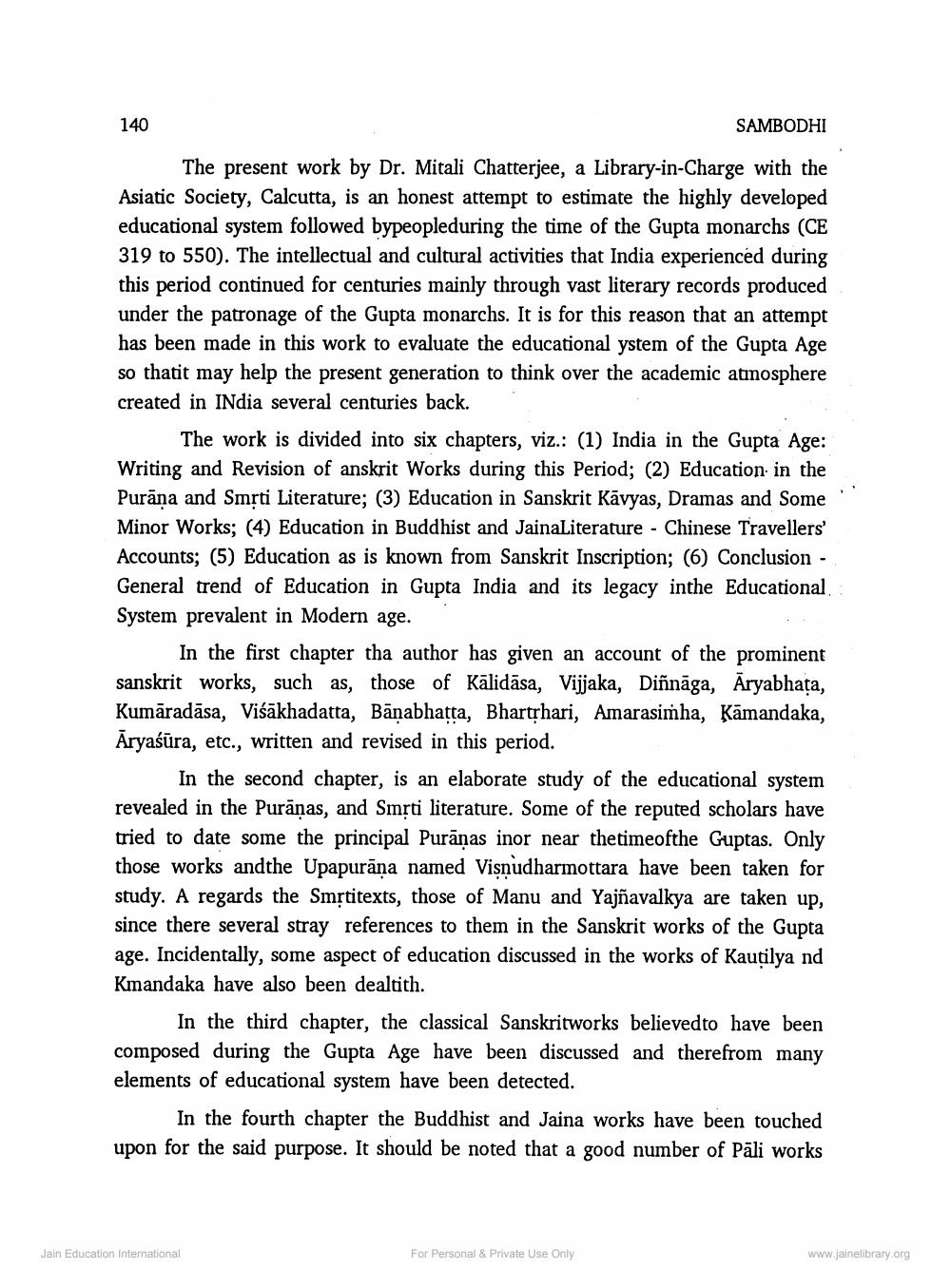________________
140
SAMBODHI
The present work by Dr. Mitali Chatterjee, a Library-in-Charge with the Asiatic Society, Calcutta, is an honest attempt to estimate the highly developed educational system followed bypeopleduring the time of the Gupta monarchs (CE 319 to 550). The intellectual and cultural activities that India experienced during this period continued for centuries mainly through vast literary records produced under the patronage of the Gupta monarchs. It is for this reason that an attempt has been made in this work to evaluate the educational ystem of the Gupta Age so thatit may help the present generation to think over the academic atmosphere created in India several centuries back.
The work is divided into six chapters, viz.: (1) India in the Gupta Age: Writing and Revision of anskrit Works during this period; (2) Education in the Purāna and Smrti Literature; (3) Education in Sanskrit Kāvyas, Dramas and Some Minor Works; (4) Education in Buddhist and JainaLiterature - Chinese Travellers' Accounts; (5) Education as is known from Sanskrit Inscription; (6) Conclusion - General trend of Education in Gupta India and its legacy inthe Educational System prevalent in Modern age.
In the first chapter tha author has given an account of the prominent sanskrit works, such as, those of Kālidāsa, Vijjaka, Diñnāga, Āryabhata, Kumāradāsa, Viśākhadatta, Bānabhatta, Bharthari, Amarasimha, Kamandaka, Āryaśūra, etc., written and revised in this period.
In the second chapter, is an elaborate study of the educational system revealed in the Purānas, and Smrti literature. Some of the reputed scholars have tried to date some the principal Purānas inor near thetimeofthe Guptas. Only those works andthe Upapurāņa named Visnudharmottara have been taken for study. A regards the Smstitexts, those of Manu and Yajñavalkya are taken up, since there several stray references to them in the Sanskrit works of the Gupta age. Incidentally, some aspect of education discussed in the works of Kautilya nd Kmandaka have also been dealtith.
In the third chapter, the classical Sanskritworks believedto have been composed during the Gupta Age have been discussed and therefrom many elements of educational system have been detected.
In the fourth chapter the Buddhist and Jaina works have been touched upon for the said purpose. It should be noted that a good number of Pāli works
Jain Education International
For Personal & Private Use Only
www.jainelibrary.org




